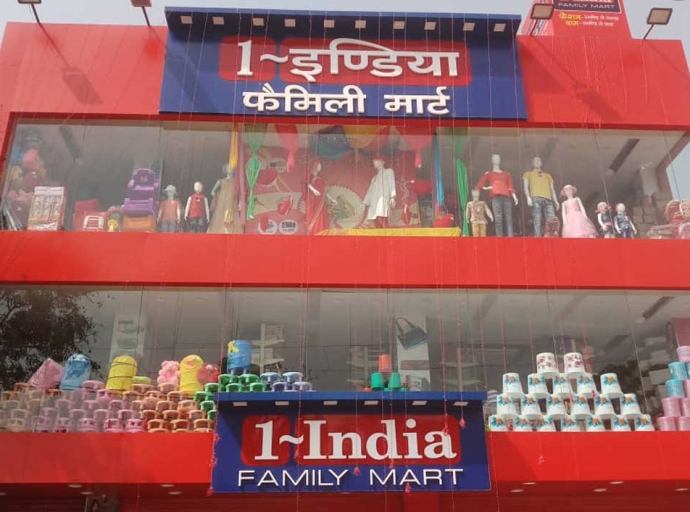The Indian retail sector has moved into 2025 with vigor, registering its best-performing opening quarter in the past three years, reveals a recent JLL report.
The period from January to March witnessed an increase in both leasing activity and new mall supply, with the fashion and apparel segment at the helm, with almost 31 per cent share of total leased space. This start to the year signals a strong resurgence in physical retail, pushed up by domestic players and an influx of new shopping destinations.
Fashion Guru
Five new malls signal retail resurgence
A major indicator of the revitalized retail landscape is the addition of five new shopping malls, collectively spanning 2 mn sq ft, which became operational in the first quarter of 2025.
This new supply in just three months has already exceeded the total mall space added throughout the entire year of 2024, underscoring renewed investment and confidence in the sector. Moreover, an additional 7 mn sq ft of Grade A shopping mall supply is expected to be added in the remaining three quarters of 2025, promising further expansion and opportunities for retailers.
DFU Profile
Leasing activity skyrockets, Bengaluru, Hyderabad lead
The leasing momentum in Q1 2025 was equally impressive, at 169 per cent year-on-year growth. Across the top seven Indian cities, a total of 3.1 mn sq ft of retail space was leased during this period.
Notably, Bengaluru and Hyderabad emerged as the epicenters of this leasing activity, collectively accounting for 60 per cent of the overall India leasing volume. This concentration highlights the strong consumer demand and retailer confidence in these southern metros.
Join our group
Domestic retailers drive growth with 86 per cent share
Mirroring the previous findings, domestic retailers continued to be the primary drivers of this expansion, securing an impressive 86 per cent share of the total retail space take-up in Q1 2025. This reinforces the trend of Indian brands and retailers actively expanding their physical footprint and catering effectively to the preferences of local consumers.
Organized retail stock grows
The addition of new mall supply has further augmented the organized retail stock across the top seven cities, reaching a total of 88.5 mn sq ft by the end of Q1 2025. This growing inventory gives a wider array of options for both domestic and international retailers looking to establish or expand their presence in the Indian market.
City highlights and new developments
The impact of this retail resurgence is evident across various cities.
Join our community
Bengaluru and Hyderabad lead leasing: As highlighted by the data, Bengaluru and Hyderabad were the frontrunners in leasing activity during Q1 2025. This is due to their strong economic growth, growing consumer base, and the presence of well-established and newly developed retail infrastructure. The opening of new sections in malls like Nexus Koramangala in Bengaluru and the continued occupancy growth in Inorbit Mall, Cyberabad in Hyderabad contributed significantly to these figures.
Growth continues in Mumbai and Delhi-NCR: While Bengaluru and Hyderabad led in terms of volume, Mumbai and Delhi-NCR continued to witness leasing activity, particularly in anticipation of upcoming mall completions. The Phoenix Palladium Annexe in Mumbai and the future phases of malls in Delhi-NCR are attracting significant interest from fashion and apparel brands seeking prime retail spaces.
New mall impact: The five new malls that became operational in Q1 2025 have already begun to influence the retail landscape in their respective locations. While the specific names and locations of all five malls were not detailed in the provided excerpt, their addition signifies a tangible increase in available retail space and provides new avenues for brands to connect with consumers.
Visit for more
Table: Retail leasing activity Q1 2025
Retail category Percentage of leasing activity Fashion and Apparel 31% Food and Beverage 18% Entertainment 15% Hypermarkets/Department Stores 12% Others 24%
Source: JLL Report, Q1 2025
Fashion and apparel sector remains the driving force
The consistent dominance of the fashion and apparel sector, accounting for nearly a third of all leasing activity, underscores its important role in the Indian retail market. The allure of physical stores for experiencing fashion first hand, coupled with the growth plans of both domestic and international brands, continues to boost demand for retail space in this category.
Experts points out, the strong leasing numbers in the fashion and apparel segment reflect the enduring importance of physical retail for consumers in this category. Despite e-commerce growth, the tangible experience of browsing collections, trying on garments, and receiving personalized service remains highly valued
Table: Retail leasing and supply Q1 2025
Metric Q1 2025 Value Highlight Total Leasing (Top 7 Cities) 3.1 msf 169% year-on-year growth New Mall Supply 2 msf Already surpassed entire 2024 supply Additional Expected Supply 7 msf Pipeline for the remaining three quarters of 2025 Organized Retail Stock 88.5 msf Reached by the end of Q1 2025 Fashion & Apparel Leasing 31% Dominant retail category Domestic Retailer Take-up 86% Majority share of leased space
The strong performance of the Indian retail sector in Q1 2025, marked by significant leasing growth and a substantial influx of new mall supply, reveals an optimistic picture for the remainder of the year. With a strong pipeline of upcoming malls and the continued expansion of domestic retailers, particularly within the dominant fashion and apparel segment, the sector appears ready for sustained growth. The focus now shifts to the performance in the subsequent quarters and the successful operationalization of the anticipated new retail spaces.





































